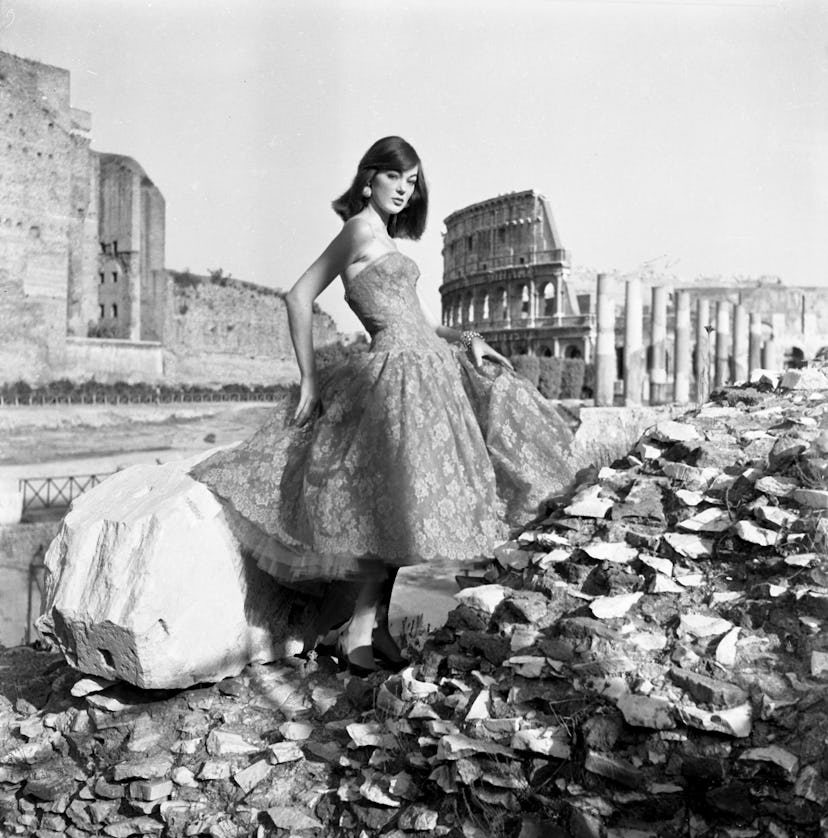La Dolce Moda

Hard as it is to fathom in this age of Prada, Armani, and Versace, before World War II, Italians, like pretty much everyone else, took their fashion cues from Paris. Wealthy Roman women could afford to buy Diors and Balenciagas fresh from the maisons, while the rest of the country subsisted on imitations.
The war, however, leveled the playing field. And, bolstered by the Marshall Plan, with its injection of American raw materials and cash (about $1,000 a minute in the course of four years), Italy came into its own as an arbiter, rather than a follower, of fashion. A new generation of designers emerged, including Roberto Capucci, Valentino Garavani, and Emilio Schuberth, and aristocratic women like Princess Irene Galitzine and Simonetta Visconti, who in flusher times had outfitted themselves in the ateliers of Paris, began designing their own clothes and dressing the jet set. Even Bulgari, a jewelry house founded in 1884 onRome’s Via Sistina, eschewed the tenets of the French goldsmith school, embracing a more Greco-Roman classicism. In 1951, the Sala Biancain Florencewas annointed Italy’s official runway venue, but designers like the sisters Zoe, Micol, and Giovanna Fontana would find an even more high-profile platform for their work in films like Michelangelo Antonioni’s 1955 The Girlfriends and Federico Fellini’s 1960 *La*Dolce Vita. Artists like Paolo Scheggi, Getulio Alviani, and Lucio Fontana also played starring roles, inspiring designers like Mila Schön and Germana Marucelli to give their glamour a conceptual edge.
It is from the Luchino Visconti film Bellissima that an exhibition co-curated by Maria Luisa Frisa, Anna Mattirolo, and W’s Stefano Tonchi for the MAXXI contemporary art museum in Rome, gets its name. In photos, artworks, and original garments, the show celebrates the golden era of alta moda, from 1945 to 1968—the year protesters threw eggs at the opulently attired attendees of the opening night of La Scala in Milan. “More than just a pivotal moment in fashion history,” Tonchi says, “it was a time when fashion, art, film, and photography came together to define the Italian identity as we know it.”
Photos: La Dolce Moda
Two models in Valentino on the steps of the Central State, Rome, 1958. Photograph by Federico Garolla.
A Ugo Mulas fashion shoot in Venice, 1958. Courtesy of the Ugo Mulas Archive.
Model Ivy Nicholson in a Fernanda Gattinoni dress. Photograph by Federico Garolla.
Roberto Capucci coat, 1969. Courtesy of Claudia Primangeli/Historical Archive Fondazione Roberto Capucci.
Another Mulas image, Venice, 1966. Photograph by Pasquale De Antonis.
A Bulgari Snake bracelet, 1965. Courtesy of Bulgari.
A dress by Sorelle Botti. Photograph by Pasquale De Antonis.